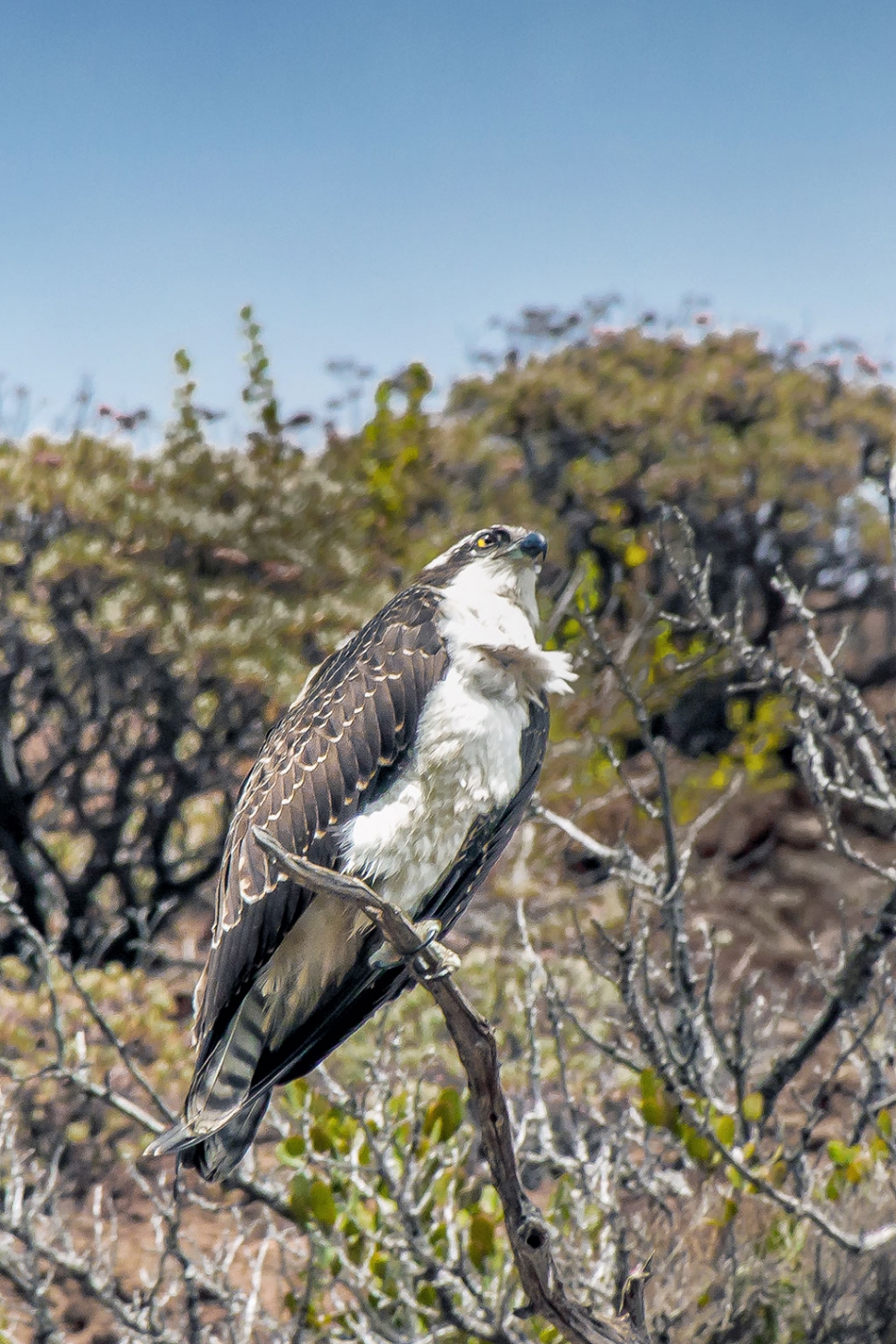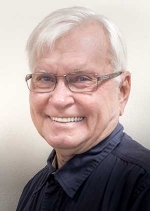|
Focus on Photography
 Photo of the week "Majestic osprey perched at Frys Harbor, Santa Cruz Island" by Bob Crum. Photo data: Canon 7D MKII camera on manual mode, ISO 500, Tamron 16-300 mm lens @300mm, aperture f/10, shutter speed 1/320th of a second. By Bob Crum — Wednesday, October 3rd, 2018
A photographer's eye
 Bob Crum French impressionist artist Claude Monet said: "We all look at the same things, yet we see things differently." It's my experience that while we may all look at the same things, few are those that 'see.' The recent journey to Santa Cruz Island was proof. Upon arriving at Frys Harbor, perched high on the hillside sat an osprey. I managed a photo from the skiff that took us from the ship to the beach. Of the five others in the dinghy, none seemed interested in the magnificent raptor. At the outset, this stark realization: Photography enables a photographic eye by which we 'see' what others don't. Quite a phenomenon. Onshore I went exploring and surprised to discover rusty railroad tracks. These were used in the late 1800s to transport quarried rock to waiting barges in the harbor. Interesting but more interesting was that no one else was interested. Beach loungers all! Not a judgment, merely an observation. Then came time for the naturalist-led hike into the canyon where I anticipated oodles of photo ops. I was not disappointed. I stayed at the rear of the group so I could stop to make a photo without holding up the parade of hikers. As we walked single file along the trail, I watched the others. So much splendor going under the awareness radar of the multitudes. We were walking in an ancient grove of trees where for centuries Chumash Indians once traipsed. I sensed a specialness of these sacred grounds. The others just kept walking. Quoting Jonathan Swift: “Vision is the art of seeing what is invisible to others.” To that, I'll add another description of a photographer's 'eye': The unique ability to 'see' what is readily dismissed by most others. Let's... ahem... see how that applies. The trail meandered around several downed trees and crossed a natural spring-fed creek. No wind to speak of so the tree's leaves were still. This meant that even in the shade I could set the aperture at f/11 for extended depth of field. Were it windy, I'd have to significantly increase the shutter speed to compensate for moving limbs and leaves. This would necessitate opening the aperture at the expense of depth of field. Got that picture? Along the trail, I felt compelled to stop and take note of the glorious scene I was 'seeing.' I didn't just see a group of trees and ignore them. The sunlight peering through the canopy above pranced and danced on the ground as if in a playground. The rays of light also seemed to illuminate exactly what nature wanted me to 'see.' Even the often considered innocuous boulders along the spring-fed creek splendidly complimented the scene. I became intrigued with the curving, ambling oak tree limbs. The shadows falling ever so gently on the sprawling limbs of the mighty oaks caressing them with love. Without touching I could sense the texture of the tree's bark. Every time I moved the angle of light changed causing me to see a different and delightful scene. Photo ops at every turn. Photography is fascinating on so many levels. Note, however, that it's just as much about 'awareness' as it is about seeing. Awareness effectuates 'seeing' automatically. The more aware you become, the more you 'see' about everything. Practicing awareness every day is key to developing a photographer's eye. Soon thereafter, you'll create more compelling photographs. Photo of the week: The majestic osprey at Frys Harbor, Santa Cruz Island. Link to the Santa Cruz Island trip photo slideshow: https://youtu.be/uUV6ztHnX6k Send your comments, suggestions or questions to: focusonphotography@earthlink.net |
